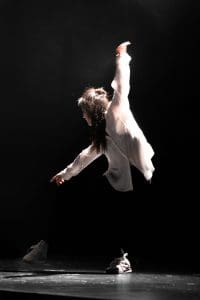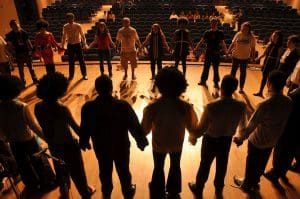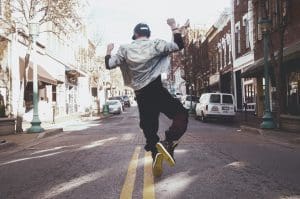Creative Arts Therapy Feature: Dance/Movement Therapy
Do you enjoy the arts? Have you ever wanted to see how getting creative can help you mentally? This feature is just one in a series of entries exploring the different types of creative arts therapy. You can learn more about other outlets here!
Created in the 1940s by Marian Chace, dance/movement therapy (DMT) is a psychotherapeutic intervention using movement and dance to support intellectual, emotional and motor functions of the body. In a session, the therapist responds to movements, assesses body language and nonverbal behaviors and emotional expressions to develop interventions to address the specific needs of the client. DMT was founded on 4 core premises:
functions of the body. In a session, the therapist responds to movements, assesses body language and nonverbal behaviors and emotional expressions to develop interventions to address the specific needs of the client. DMT was founded on 4 core premises:
- Movement is a language
- Mind, body, and spirit are interconnected
- Movement is functional, developmental, communicative and expressive
- Movement is an assessment tool and primary mode of intervention
DMT sessions can vary depending on the therapist and the group dynamic. One style of session is the “Chacian group.” This group follows a semi-structured style of intervention. Participants engage in a warm-up where they are invited to dance to the music while standing in a circle. This is followed by an improvised movement experience in which the therapist notes the movement of the participants and creates opportunities for movement synchrony and expansion. Participants also engage in expressive, functional and/or communicative moments. A typical “Chacian group” session ends with a cool down and the therapist asking the clients to talk about their movement experience and helping them to gain insights from the movement.
Other sessions might focus on increasing body awareness in a subtler way. The therapist will work with clients to develop an awareness of micro-movements that happen when talking, standing or sitting. This approach is based on the idea that emotions begin as sensations in the body. Therefore, an increase in body awareness and the ability to identify sensations leads to greater control and regulation of emotions. The therapist might ask the client to embody a posture or gesture, repeat it, make it smaller or larger or just to simply stay with the movement.
 Lastly, more creative and expressive sessions exist in which clients choose to create dance or movement sequences that come from inner sensations or concerns. In group sessions, participants might work together to create a movement piece, using problem solving, teamwork, and communication skills.
Lastly, more creative and expressive sessions exist in which clients choose to create dance or movement sequences that come from inner sensations or concerns. In group sessions, participants might work together to create a movement piece, using problem solving, teamwork, and communication skills.
While there are a variety of session experiences one may have when participating in DMT, the important skills learned from the intervention are the same. The participant learns how to develop and trust their own ability to present and respond empathetically and truthfully. They also learn how to translate nonverbal movements into insights that can be used for recovery.
The efficacy of DMT has been supported by numerous research articles. In a study looking at the treatment outcome of 10 weeks of dance/movement therapy intervention, dance therapy was found to be effective in improving short and long-term quality of life. A meta-analysis evaluating the effectiveness of DMT and the therapeutic use of dance for the treatment of health-related psychological problems suggested that DMT and dance are effective in  decreasing clinical symptoms such as depression and anxiety. Positive effects such as increased subjective well-being and positive mood, affect, and body image were also found (another study found that in adolescents with mild depression in the DMT group had a plasma serotonin increase and dopamine concentration decrease. This suggests that DMT may be effective in improving psychological distress in adolescents with mild depression.
decreasing clinical symptoms such as depression and anxiety. Positive effects such as increased subjective well-being and positive mood, affect, and body image were also found (another study found that in adolescents with mild depression in the DMT group had a plasma serotonin increase and dopamine concentration decrease. This suggests that DMT may be effective in improving psychological distress in adolescents with mild depression.
DMT is used to treat physical, psychological, cognitive and social issues. People who are treated with DMT range all the way from those that suffer from cancer, arthritis and autism to those who are dealing with anxiety and depression. The positive effects of an increased quality of life paired with the wide variety of people who can benefit from DMT make this therapy option a great one!
Have you ever tried DMT? Is it something that you’d like to do? How do you think that moving – and dancing especially – can help with your mental health? What other ways do you think you can incorporate dancing and moving into your daily routine for your well-being?



Recent Comments